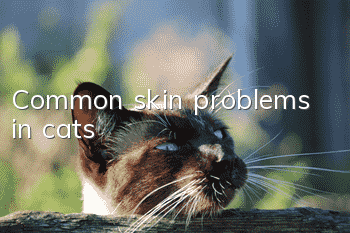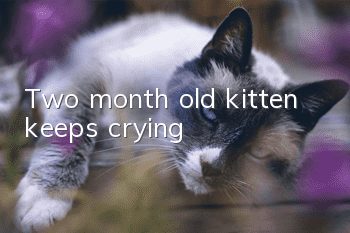Common skin problems in cats

Common types of skin diseases in cats:
1. Bacterial skin diseases: mainly bacterial infections. Pyoderma and folliculitis are common bacterial infections.
2. Fungal skin disease: caused by skin fungal infection; skin fungi survive for a long time in nature, have strong resistance, and can survive for more than 1 year in a dry environment. There are also some fungi that have an affinity for soil and can grow and reproduce in the soil and survive for a long time. The most common cat ringworm, ringworm, is classified as a fungal infection. Typical symptoms are localized hair loss, papules, mixed spots and scarring. Cat ringworm is highly contagious and is common to humans and animals. Once discovered, it must be treated and controlled as soon as possible.
3. Seborrheic skin disease: Abnormal oil secretion, typical symptoms: black tail and black chin.
4. Ectoparasitic skin diseases: caused by fleas, scabies, demodex, ear mites, lice, ticks, etc. The itching sensation of the bites causes the cat to scratch, which can easily lead to secondary infection. Mite infection, or mixed infection with mites and fungi, is a type of skin disease that occurs frequently and is difficult to treat, so if your cat has symptoms of mites, don’t hesitate to seek medical advice as soon as possible.
5. Allergic skin diseases: allergies caused by parasites, food and other allergens.
6. Metabolic skin diseases: hormonal skin diseases.
7. Immune abnormality skin diseases: nutrition-related skin diseases, etc.
Methods to prevent and treat cat skin diseases:
1. Diagnose the cause
Only by going to the hospital as early as possible to confirm the cause, targeted treatment can maximize the effectiveness of the treatment. The effect will not delay the condition.
2. Control infection
Especially for skin diseases such as cat ringworm that are highly prevalent and easy to relapse, local or regular medicinal baths to fight infection are very helpful
3. Fur care
You need to pay attention to your cat's skin health, comb your cat's fur regularly, and bathe your cat with natural and mild bath waves.
4. Supplement nutrition
If your cat’s hair is of poor quality, prone to hair loss, dry and dull, you can usually supplement the fur nutrition to improve the health of the fur.
5. Environmental cleanliness
The living environment of cats must be kept clean, and bedding and other items must be disinfected when cat ringworm occurs.
- What should you pay attention to when adopting a cat?
- Norwegian Forest Cat Postpartum Care Precautions
- Why are cats so soft and flexible? Illustration of cats’ unique bone structure
- Can pregnant cats eat yogurt?
- Do Shandong lion cats have gills?
- What foods are suitable for cats? 6 recommended healthy foods for cats
- Do cats eat oranges?
- How to tell how old an American wirehair cat is
- How to do daily eye care for cats
- Are cat flea collars useful?



